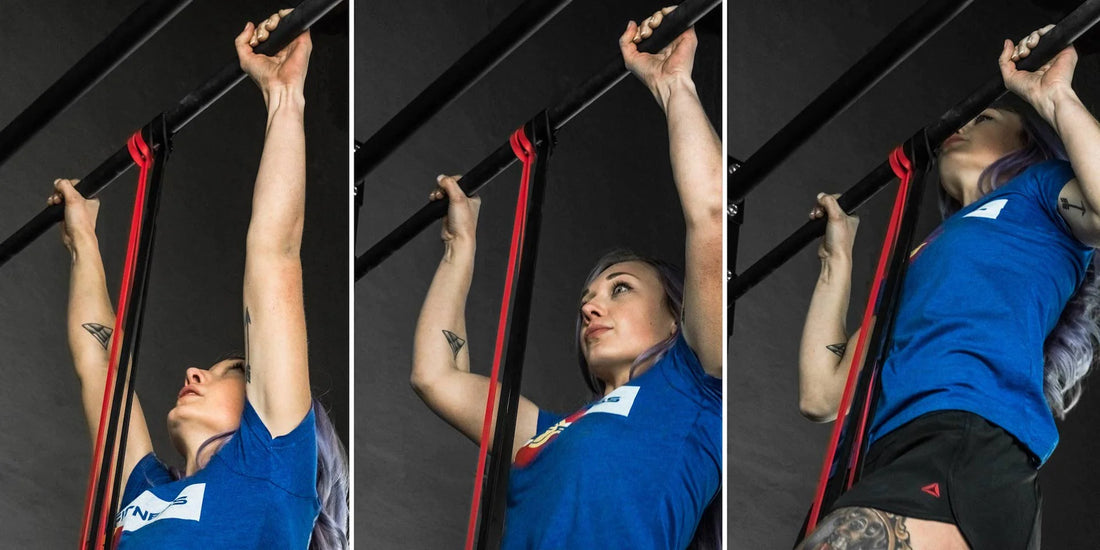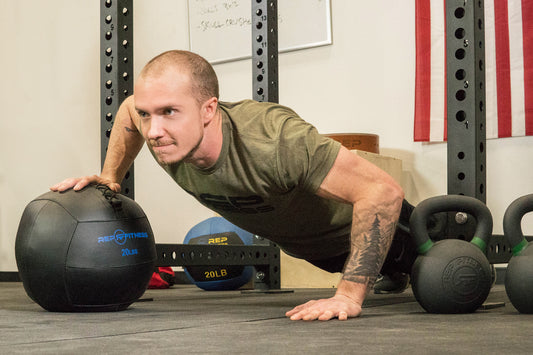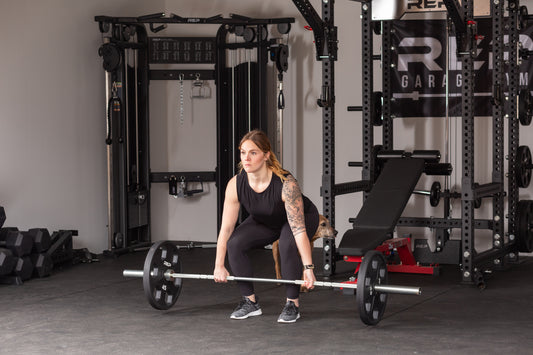
Hate ’em or love ’em, but pull-ups are an incredible upper-body exercise that work your back, shoulders, chest, forearms, abs, and grip. So, it’s a smart goal to want to improve your pull-ups – whether that means getting one single, unassisted pull-up, or improving the speed, form, and reps.
Pull-ups provide a neat challenge because the load depends on your size. If you’re smaller, you need to move less weight but you may have less muscle mass to tap into. If you’re bigger, well, more muscles mean more weight to move. Pull-ups can demand a lot of your back and shoulders, so you want to make sure you have proper form when you do them.
Note: A pull-up isn’t the same thing as a chin-up. A pull-up uses an overhand grip (palms facing away from you), whereas a chin-up uses an underhand grip (palms facing toward you). Chin-ups allow you to use your biceps – which can make them easier -- and they have a narrower grip. Your shoulders are also externally rotated for a chin-up. Pull-ups are wider and use more back, especially lats. Both chin-ups and pull-ups are valuable exercises.
Here’s a look at how to get your first pull-up, how to do a proper pull-up, and how to keep progressing the exercise.
HOW TO GET YOUR FIRST PULL-UP

Here are some progressions to help you nail a pull-up, in part recommended by Colorado-based personal training company Barpath Fitness.
- Start by hanging. Yup. Just hang on the pull-up bar. Don’t worry about anything else. Don’t think about engaging any muscles. Work up to 60 seconds. This helps build your grip strength.
- Now make that hang active. Once you can dangle for 60 seconds, let’s keep hanging around but with some intention. Turn on your core and try to put your body in a hollow position. Tighten your legs and glutes. Keep your legs tight together (think: No energy leaks!). Practice these 60-second activated hangs for reps, just like any other exercise.
- Start making a connection with your scaps. As you hang, depress and retract your scapula. This looks like pulling your shoulder blades back and down. These are called scap pull-ups. Try these for 3 sets of 10 or so.
- Now that you have awareness of and more strength in your upper body, let’s do some chin-up holds. Flip those palms up and jump your way up so your chin is above the bar. You can also use a resistance band to help reduce the load and get yourself high enough. Hold your chin above the bar for increasingly long periods, until you can do it for 30 seconds.
- Train the negatives. Pulling up is harder than letting go, so now practice your negatives. Jump up or use the resistance band to get your chin above the bar (still palms up), but now slowwwwwwly lower your body in a controlled manner, keeping your muscles all turned on. Try to take five to 10 seconds for your descent. Do these in reps/sets until that 10-second descent is solid. Then combine #4 and #5: Hold for 30 seconds, lower for 10. Keep practicing this, building strength, until you feel ready to move on.
- Now try the same progression of #3, #4, and #5 with an overhand grip, and slightly wider. All these exercises are building your muscles, grip, and mental familiarity with the movement, so they’re valuable in and of themselves.
- Now let’s try pulling up. Start with a resistance band. Loop it around the pull-up bar and place your foot in the loop at the bottom – or better yet, attach it horizontally to both uprights (around band pegs) so it creates a sort of supportive tightrope for you to place your feet on. The thicker the band, the more assistance. Start with chin-ups, then move to pull-ups. Slowly reduce the thickness of the band until you don’t need one.
OTHER WAYS TO IMPROVE YOUR PULL-UPS

- Practice deadlifts and inverted rows. Get in your lat pulldowns to grow your lats.
- Train your core!
- Grow your biceps with curls. This can help with chin-ups.
- Add chalk to your grip.
- Train your grip by using thicker bars, like the Axle Bar.
HOW TO DO A PROPER PULL-UP

If you can’t reach the bar, place a bench or box near the pull-up bar to help you get there. Try placing your hands slightly farther than shoulder width apart.
When you're hanging, before you do your first pull-up, engage your core and retract those scaps like you practiced. Flex your glutes, quads, and legs; the legs will be slightly in front of the body.
As you pull, look up toward the bar and visualize your elbows moving toward your hips. Keep your body tight – no swinging. Imagine you’re pulling the bar toward your body, not pulling yourself up toward the bar.
Also, think about bringing your chest to the bar to allow for thoracic extension of the back. While pulling, don’t shrug your shoulders up toward your ears; keep those shoulder blades back and down.
When descending, keep active and controlled. At the bottom, don’t let it all go loosey-goosey. Keep the shoulders packed down and back.
HOW TO ADD CHALLENGE TO YOUR PULL-UPS
Looking to up your pull-up game? Here are a few ways to add more challenge.

- Change your grip. We’re all stronger with certain angles than others. Hunt discomfort by switching up your grip to try to find weaknesses. A Multi-Grip Pull-Up Bar has a variety of options, from wide to narrow, angled to straight, fat grip to normal.
- Try globe pull-ups. The Globe Pull-Up Bar features small 3.1” globes and large 4” globes to hold onto.
- Add weight. Weighted pull-ups are the next level. You can achieve this using a Dip Belt with plates attached, or a Dip Belt connected to a Belt Squat Attachment.
- Do a one-arm pull-up.
- Try pull-ups on gymnastic rings instead of a bar. Because the rings are unstable, they provide a different stimulus.
- Master muscle-ups. Muscle-ups are like pull-ups that just keep going. You end with straight arms above the bar.
- Do finger pull-ups. These are just what they sound like: Pull-ups with only two or three fingers on the bar.
- Do towel pull-ups. Wrap a towel around the pull-up bar and pull using both or one hand. This provides a different (and added) grip challenge.
- Try a typewriter pull-up, where you create a horizontal movement from side to side.
- If you’re excellent at pull-ups (i.e. you can do at least 15 pull-ups in a row with proper form), throw in a clap at the top. These are explosive, with a slight lean back. Here's a guide to help you progress to get these.
- Work your abs extra by doing L-sit pull-ups, with your legs raised to create an “L” shape.
- Learn how to do a kipping pull-up. This style of pull-ups, commonly seen in CrossFit, adds a swing to the pull-up.

